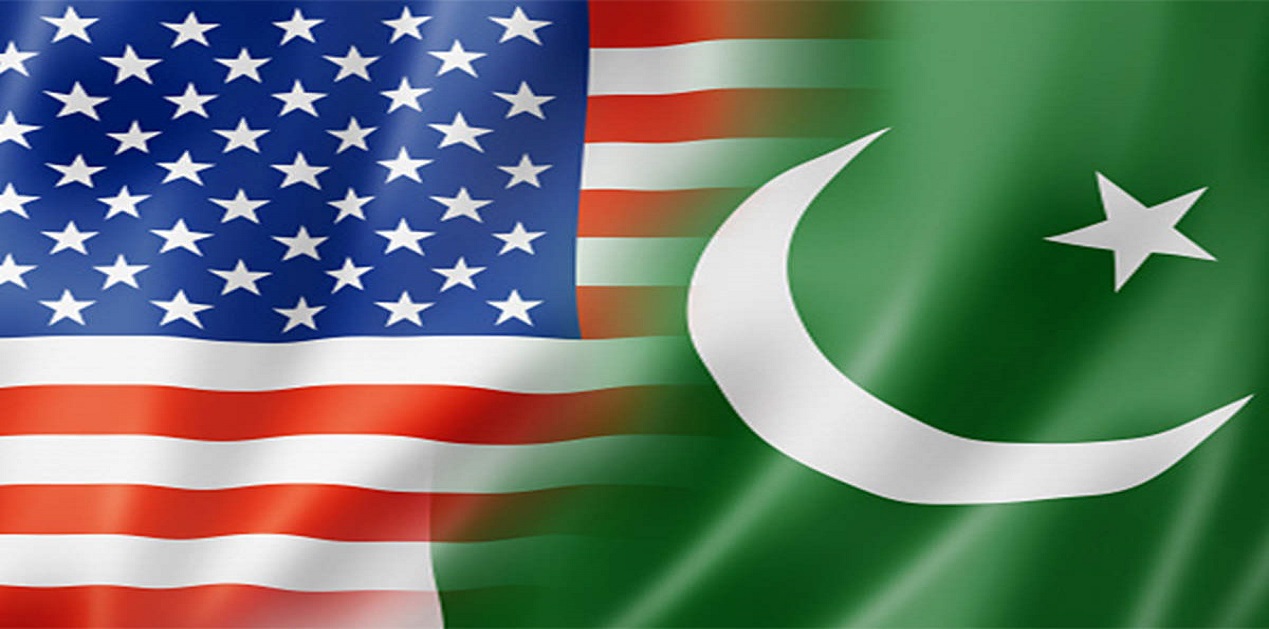The Cabinet of Pakistan has discreetly approved the formalisation of the ‘Communication Interoperability and Security Memorandum of Agreement’ (CIS-MOA), a new security agreement with the United States (US). This action signifies a renewed beginning in the realm of defence collaboration following a prolonged period of mistrust between the two nations, potentially paving the way for Islamabad to acquire military equipment from Washington.[1] The recent occurrence follows a mutual agreement between Pakistan and the US to strengthen their bilateral relations, particularly in the defence realm. This agreement was reached during a meeting between General Michael Erik Kurilla, the Chief of the US Central Command (CENTCOM), and General Asim Munir, the Chief of Army Staff (COAS) of Pakistan. Nevertheless, both parties refrained from making a formal declaration regarding the signing of the agreement.[2]
What is CIS-MOA?
The CIS-MOA is a fundamental agreement entered into by the US with its allied nations and countries with which it seeks to foster strong military and defence relationships. The deal provides the US Department of Defence constitutional safeguards about selling military equipment and hardware to foreign nations. The CIS-MOA facilitates the exchange of classified military communications and information while establishing criteria for the compatibility of military communication networks if involved.
The significance of the CIS-MOA lies in its facilitation of enhanced military cooperation between the US and Pakistan. The implications of this matter lie in the fact that Pakistan holds a pivotal position as a strategic ally for the US within the region. Pakistan is geographically adjacent to Afghanistan and has played an integral part as an essential link in the US-led counterterrorism efforts. Implementing the CIS-MOA will enable the US to enhance its provision of advanced military equipment and training to Pakistan. This, in turn, as claimed, will bolster Pakistan's defensive capabilities against various threats posed by terrorist organisations and other adversaries.
The initial signing of the CIS-MOA occurred in October 2005, between the Joint Staff Headquarters of Pakistan and the US Department of Defence, with duration of 15 years. The agreement reached its expiration in the year 2020. [3] Now the Pakistani cabinet recently renewed the contract. The renewal of the CIS-MOA is a sign of the strong commitment of both countries to their military relationship.
Pakistan has been facing insurgencies, particularly in the tribal regions along the border with Afghanistan. The country has struggled with extremist groups like the Tehreek-i-Taliban Pakistan (TTP) and other militant organisations that have caused instability and loss of life. By studying and implementing the principles outlined in the CIS-MOA doctrine, Pakistani security forces may be able to address these challenges better and promote peace and stability within their borders. The knowledge gained from understanding this doctrine can also be applied to other countries facing similar challenges.
Countries that have Signed CIS-MOA with the US
Countries that have entered a CIS-MOA with the US include India, Japan, South Korea, Australia, New Zealand, and the Philippines. The Indo-Pacific region encompasses these nations that serve as allies and partners to the US, with whom they share mutual strategic interests and security concerns. The CIS-MOA facilitates access to sophisticated US military technology and equipment while strengthening their ability to collaborate and synchronise operations with US forces.
Will Pakistan Gain Anything?
The geopolitics of the South Asian region has changed dramatically. The strained China-Taiwan relationship is a global concern for strategic and economic reasons. Washington’s interest in Indo-Pacific is well known. The dynamic strategic scenario in the region demands strong ties between the US and India. To clear the thick layered fog, the US badly needs India to counter China; meanwhile, Pakistan lost its decades of significance in the eyes of the US.
As US president, Trump had long criticised Pakistan for not doing enough to root out militants. He continued by saying that all Islamabad has given the US in exchange for American aid were "lies and deceit." Joe Biden has not had any official communication with the Pakistani government since he was elected US President in 2020. Therefore, it will not be easy for Pakistan ‘to milk’ the CIS-MOA agreement as per its terms.[4]
Pakistan was once a significant recipient of military and security assistance from the US, but with the cold war ending and China challenging US supremacy, the equation has changed.
However, the US requires Pakistan for several vital reasons, and this deal benefits both parties. The 'Integrated Country Strategy' states that Pakistan's strategic location between South and Central Asia makes it an essential player in fostering regional security and connectivity. It is in America's national interest to encourage Pakistan's economic integration within South and Central Asia and the development of commercial links that would strengthen connectivity and trade. Maintaining Pakistan's stability and prosperity is paramount to critical U.S. national security objectives, encompassing counterterrorism efforts, promoting regional peace and strength, and preventing nuclear proliferation. The primary goals of U.S. Mission Pakistan, in collaboration with the Pakistani government, encompass various vital areas. These include the efforts to counteract terrorism and violent extremism, promote regional stability, integration, and security, facilitate inclusive economic growth and sustainable development, enhance civilian democratic institutions, and safeguard human rights.[5]
Pakistan and the US have established a solid and interconnected defence partnership; however, their relationship has encountered challenges due to divergent perspectives regarding the situation in Afghanistan. The demise of Osama bin Laden, the former leader of Al Qaeda, at the hands of US Navy Seals in Abbottabad, Pakistan, in 2011, near a military training facility, had adversely impacted the bilateral relationship. In the same year, the US military conducted an airstrike on a Pakistani military outpost along the Afghan border, resulting in the unfortunate loss of 24 soldiers. This incident had led to the subsequent decision by Islamabad to block the land routes previously utilised by Allied forces for the transportation of essential supplies to Afghanistan.
In the month of July 2018, the Paris-based Financial Action Task Force (FATF) designated Pakistan as a jurisdiction that exhibits strategic discrepancies in its regime for Anti-money Laundering and Countering the Financing of Terrorism (AML/CFT). Consequently, Pakistan was included in the FATF grey list. Pakistan was included on the list for the first time in 2008, was taken off in 2009, and then again was subject to heightened monitoring from 2012 to 2015.[6]
Despite Pakistan's notable advancements in addressing the identified deficiencies by the FATF in its 2018 action plan, the country's status on the grey list had been maintained by the FATF. This decision was primarily due to the existence of one outstanding matter about the investigation and prosecution of individuals involved in financing terrorism. On October 21, 2022, after four years, the FATF removed Pakistan from its grey list, a compilation of countries under scrutiny by the global watchdog for their involvement in terror financing and money laundering activities.[7]
There have been notable advancements since the assumption of power by the government led by Shehbaz Sharif in April 2022. Pakistan may potentially interpret establishing a new agreement as an indication of a promising start.
Implications for India
The CIS-MOA represents a consequential accord poised to yield favourable outcomes for the military alliance between the US and Pakistan. Theoretically, the stipulation will facilitate improved collaboration between the two nations to tackle shared security concerns effectively. The following are several advantages associated with the CIS-MOA in the context of Pakistan:
- The acquisition of advanced US military equipment and providing training opportunities.
- The enhancement of interoperability with US military forces.
- Strengthening security cooperation between the US and the relevant party.
- The reinforcement of deterrence capabilities against regional threats.
Pakistan's military power has been widely recognised globally for its focus on India as a strategic target. Pakistan has gained a reputation for consistently aiding the Taliban in Afghanistan and other terrorist groups operating in the region of Indian Administered Jammu and Kashmir. The terrorist attacks on the World Trade Centre in the US on September 11, 2001, commonly known as 9/11, profoundly impacted global politics, with Pakistan emerging as a significant player in the international arena.[8]
It is possible to categorise the various militant organisations based in and operating out of Pakistan according to their sectarian affiliation (Ahl-e-Hadith, Deobandi, Jamaat-e-Islami, etc.) and the countries in which they are actively engaged in conflict (Afghanistan, India, Pakistan). Pakistan is instrumental in providing financial support for terrorist groups. The 'European Foundation for South Asian Studies' (EFSAS) reports that ISI spends between $125 million and $250 million per year on terrorist organisations. This includes wages, cash incentives for high-risk operations, and retainers for guides, porters, and informers. The ISI has done more than just train and fund terrorist outfits; it has also transformed the Kashmir conflict into a movement led by foreign terrorists on pan-Islamic theological lines.[9]
The primary objective of any defence cooperation agreement between the US and Pakistan is, as claimed by the US, to enhance Pakistan's counterterrorism capabilities rather than being targeted explicitly towards any country. But history has proved otherwise. Washington does not want China to strengthen its control over Pakistan, as economic turmoil in Pakistan has forced Pakistan to approach China.
Conclusion
Islamabad stands poised to potentially acquire additional military wherewithal from Washington considering the formalisation of the CIS-MOA accord. It is imperative for India to diligently oversee and scrutinise the various advancements transpiring within the neighbouring nations of Pakistan and China, as well as within the Indian Ocean region and the broader Indo-Pacific sphere. Efforts may be undertaken to enhance the efficacy of strategic and diplomatic initiatives to attain the utmost level of diplomatic and operational readiness, thereby ensuring the ability to address any unforeseen circumstances effectively.
Endnotes
[1] “Pakistan Cabinet Approves Signing of CIS-MOA Pact With US Report”, Orissa Post, August 3, 2023, https://www.orissapost.com/pakistan-cabinet-approves-signing-of-cis-moa-pact-with-us-report/. Accessed on August 8, 2023.
[2]PTI, “Pakistan Cabinet approves signing of a security pact with U.S.: Report”, The Hindu, August 03, 2023, https://www.thehindu.com/news/international/pakistan-cabinet-approves-signing-of-security-pact-with-us-report/article67154415.ece. Accessed on August 7, 2023.
[3] “Pakistan approves security pact with US, paving the way for military hardware procurement”,
August 4, 2023, https://www.livemint.com/news/world/pakistan-approves-security-pact-with-us-paving-way-for-military-hardware-procurement-11691109860883.html. Accessed on August 7, 2023.
[4]PTI, “Pak Cabinet approves signing of a security pact with US Report”, The Week, August 03, 2023, https://www.theweek.in/wire-updates/international/2023/08/03/fgn22-pak-us-ld-security-pact.html. Accessed on August 8, 2023.
[5] “Integrated Country Strategy: Pakistan”, Department of State, USA, March 29, 2022, https://www.state.gov/wp-content/uploads/2022/06/ICS_SCA_Pakistan_Public.pdf. Accessed on August 8, 2023.
[6] “Pakistan out of FATF's grey list; here's what India said”, The Mint, October 22, 2022, https://www.livemint.com/news/india/pakistan-out-of-fatf-s-grey-list-here-s-what-india-said-11666409301904.html#:~:text=Pakistan%20was%20first%20put%20on,in%20the%20FATF%20grey%20list. August 7, 2023.
[7] “Country Reports on Terrorism 2021: Pakistan”, US Department of State, 2022, https://www.state.gov/ reports/country-reports-on-terrorism-2021/pakistan/. Accessed on August 8, 2023.
[8] “Pakistan Army and Terrorism; an unholy alliance”, European Foundation for South Asian Studies, August 2017, https://www.efsas.org/publications/study-papers/pakistan-army-and-terrorism%3B-an-unholy-alliance/. Accessed on August 7, 2023.
[9]Ibid EFSAS.
(The paper is the author’s individual scholastic articulation. The author certifies that the article/paper is original in content, unpublished and it has not been submitted for publication/web upload elsewhere, and that the facts and figures quoted are duly referenced, as needed, and are believed to be correct). (The paper does not necessarily represent the organisational stance... More >>
Image Source: https://img.etimg.com/thumb/msid-60980710,width-300,height-225,imgsize-86714,,resizemode-75/us-pakistan-relationship-in-serious-trouble-expert.jpg










Post new comment